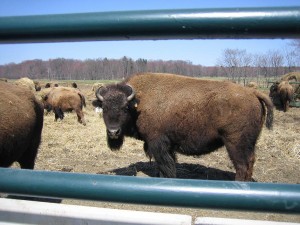This past weekend I reviewed Simon Schama’s The Story of the Jews: Finding the Words, 1000 BCE -1492 AD for the San Francisco Chronicle. When I lived in the Bay area I reviewed for this paper frequently, and I very much enjoyed reading Schama’s book, a companion volume to a Public Television series. Check your local times…
Simon Schama didn’t want “The Story of the Jews,” five hours of television and two big books, to be only “pogroms and rabbinics” – his history would draw on many sources: archaeology and hermeneutics, folktales and theology, esoteric texts detailing messianic beliefs and receipts for gifts offered to a neighbor.
Schama is a historian of prodigious and varied gifts. He can take a specific subject and drill deep; he can take a wide-angled view of many countries over long periods of time. He does both in this excellent first volume, which begins with the fifth century Before the Common Era in Egypt (yes, Jews were back in Egypt eight centuries after Moses was supposed to have led them out) and concludes with the “exile from exile” in Spain at the end of the 15th century of the Common Era.
Schama underscores that Jewish cultural identity was formed not just through the Promised Land but more broadly between the Nile and the Euphrates. Jerusalem was a touchstone for many, and the quest for the promised homeland is fundamental to the religion and culture.
But the dispersal of Jews is also fundamental – and not just because of the Roman destruction of the Holy City and the subsequent Diaspora. No, centuries before the Romans, “it was possible to be Jewish and Egyptian, just as later it would be possible to be Jewish and Dutch or Jewish and American.” Schama highlights the inclusive dimensions of the Jewish past, although he also emphasizes the ways that other groups sought to destroy this inclusivity.
“The bulk of the Bible … was written when the weaknesses of state power were most apparent. The portable scroll-book became the countervailing force to the sword.” When their neighbors turned on them, it was their texts to which Jews would cling to maintain their identity. Other monotheisms would invest heavily in their weapons, but for millennia “Jewish life was Jewish words, and they could and would endure beyond the vicissitudes of power, the loss of land, the subjection of people.”
This commitment to “finding the words” was not, as many have imagined, at the expense of images. After the Romans dispersed Jews far from Jerusalem, the people of the book were also a people of mosaics, of painting, of sculpture. In these creations they often borrowed heavily from the communities around them. Schama shows that early rabbinic Jewish culture was much more open than has generally been assumed.
This openness began to change, though not everywhere and not all at once, with the development of Christianity. Augustine may have counseled that Jews should be allowed to exist as a reminder of the Bible’s prophecies of Christ, but he was already battling a tradition from John that Jews were just “fit for killing.”
In the sixth century, after a period of toleration, the Roman Emperor Justinian announced that all synagogues should be converted to churches. After the empire was destroyed, murderous attacks on Jews frequently followed any local crisis. When a community experienced some trouble, it blamed the Jews.
Many Jews were scattered around Arabia when in the seventh century Muhammad’s teachings and armies began to be victorious. And although there was plenty of animosity between early Islam and Judaism, “in comparison with medieval Christian societies, Jews and Muslims “did indeed live with rather than just rub up against each other.”
Islamic leaders, like their Christian counterparts, often tolerated or depended on Jews – for trade, for loans, for cultural exchanges. Schama reminds us playfully that many elites seemed to think they needed a Jewish doctor in the house. And he beautifully describes the work of Jewish poets and scientists who borrowed from Islamic and Christian sources.
Especially powerful is his treatment of Maimonides, 12th century doctor, judge and philosopher, who argued against the idea that rational inquiry and strong faith had to be at odds. Maimonides’ “Guide to the Perplexed” incited sharp attacks from his co-religionists and from those who resented such a learned author daring to reject the savior.
While Schama provides plenty of examples of productive exchanges between Jew and non-Jew in a variety of contexts, the book’s final sections detail the rage that led good Christians in preparing for their Holy Crusades to slit the throats of Jewish children.
In 13th century England, mass hangings and burnings of Jews were followed by expulsion, and things were no better on the continent. Sometimes kings and nobles tried to protect Jewish subjects against popular fury, but all too often they proved willing to sacrifice them as scapegoats to satisfy fanatics.
The Spanish Inquisition institutionalized state cruelty, combining archaic savagery with modern methods of investigation and torture. Schama brings this volume to a close in 1492, when the Jews were exiled from Spain and (soon after) from Portugal.
In this revealing and moving book, though, Schama shows that exiling the Jews from our histories is not so simple. Fourteen ninety-two was also the year Columbus set sail in search of a new route to India. His royal patrons had expelled the Jews, but he took with him a Jewish translator and the navigation guide developed by Abraham Zacuto, a rabbi.
Around the same time, Vasco da Gama also set sail with Zacuto’s guide to celestial bodies: “Thanks to the rabbi, the great captain and founder of Portugal’s Asian empire knew, more or less, where he was.”
The Story of the Jews
Finding the Words, 1000 BC-1492 AD
By Simon Schama
(Ecco; 496 pages; $39.99)





